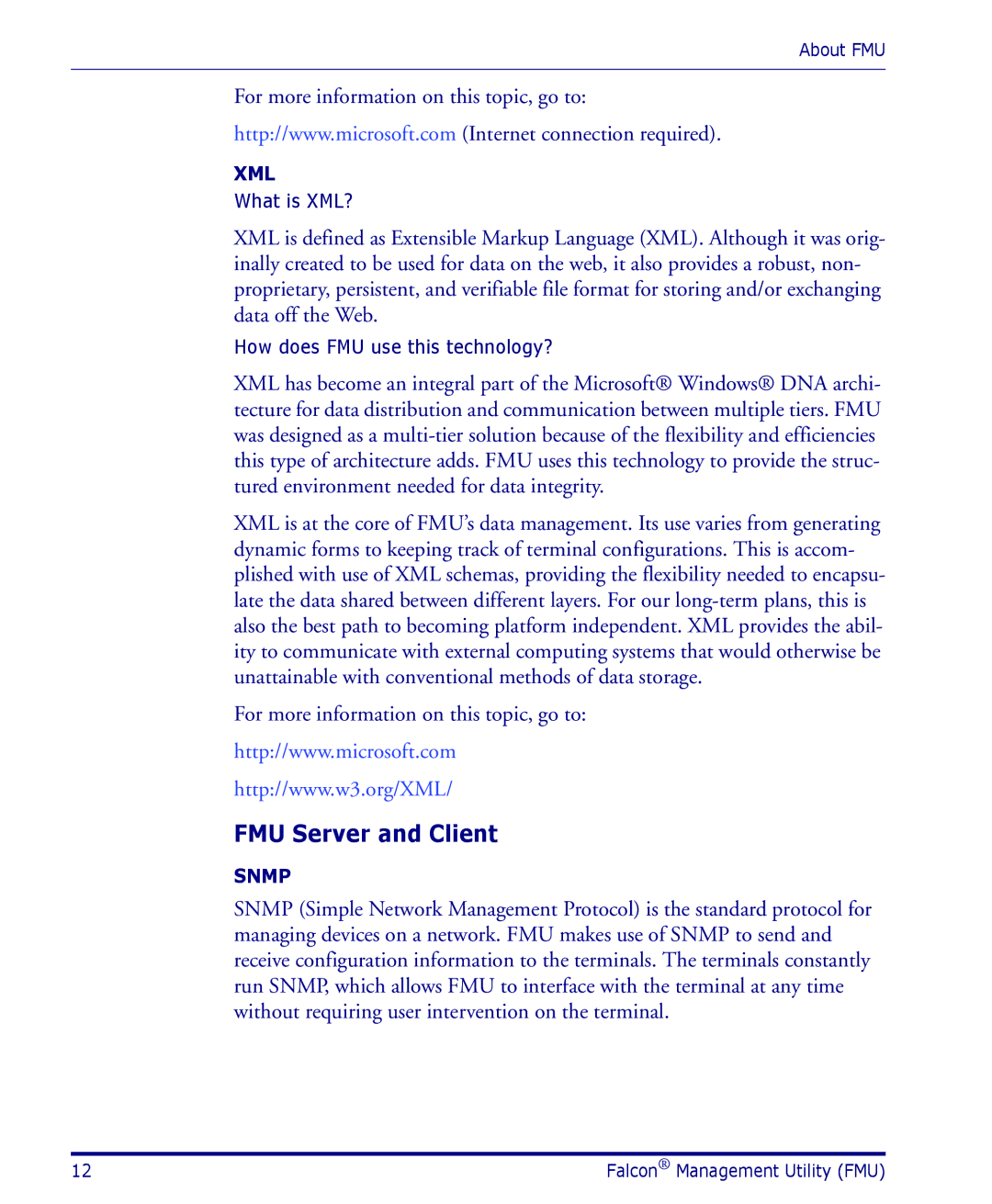
About FMU
For more information on this topic, go to:
http://www.microsoft.com (Internet connection required).
XML
What is XML?
XML is defined as Extensible Markup Language (XML). Although it was orig- inally created to be used for data on the web, it also provides a robust, non- proprietary, persistent, and verifiable file format for storing and/or exchanging data off the Web.
How does FMU use this technology?
XML has become an integral part of the Microsoft® Windows® DNA archi- tecture for data distribution and communication between multiple tiers. FMU was designed as a
XML is at the core of FMU’s data management. Its use varies from generating dynamic forms to keeping track of terminal configurations. This is accom- plished with use of XML schemas, providing the flexibility needed to encapsu- late the data shared between different layers. For our
For more information on this topic, go to:
http://www.microsoft.com
http://www.w3.org/XML/
FMU Server and Client
SNMP
SNMP (Simple Network Management Protocol) is the standard protocol for managing devices on a network. FMU makes use of SNMP to send and receive configuration information to the terminals. The terminals constantly run SNMP, which allows FMU to interface with the terminal at any time without requiring user intervention on the terminal.
12 | Falcon® Management Utility (FMU) |
